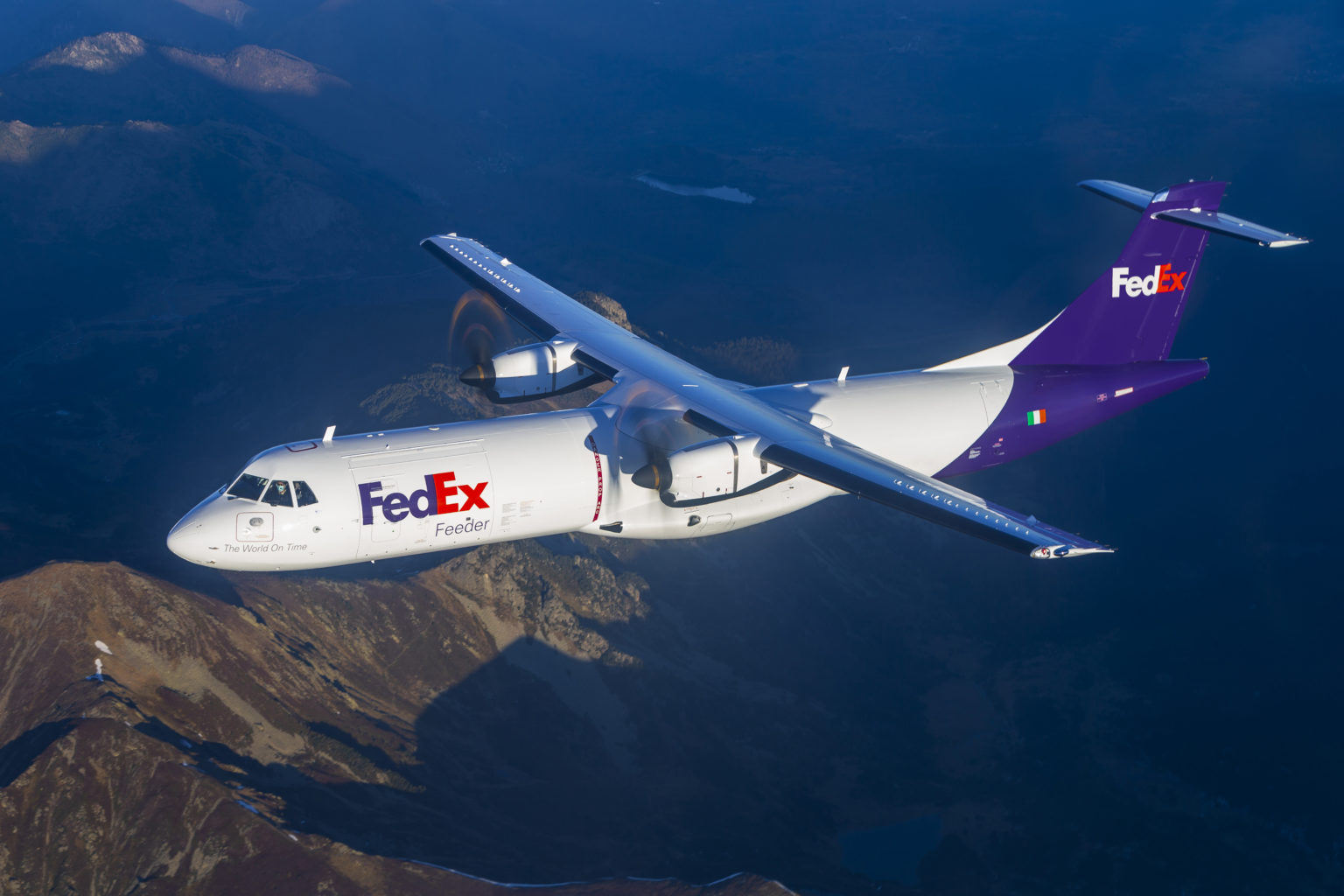Freighter aircraft are specialised airplanes designed or converted for transporting cargo, rather than passengers. These aircraft come in various configurations and sizes, serving the critical role of connecting businesses, industries, and markets worldwide. With their optimised cargo capacity, efficiency, and flexibility, freighter aircraft are integral to global supply chains.
What is a Freighter Aircraft?
A freighter, also referred to as a cargo aircraft, is an airplane specifically built or converted and used for transporting goods and cargo rather than passengers. These aircraft are equipped with spacious cargo holds, smoke detection systems, reinforced floors and attachment systems to secure the cargo. Some freighter aircraft also feature cargo loading systems to efficiently load and unload various types of cargo, such as packages, containers, pallets, bulk goods, temperature sensitive items and oversized or heavy items. Freighters play a crucial role in the logistics and transportation industry by facilitating the movement of goods around the world.
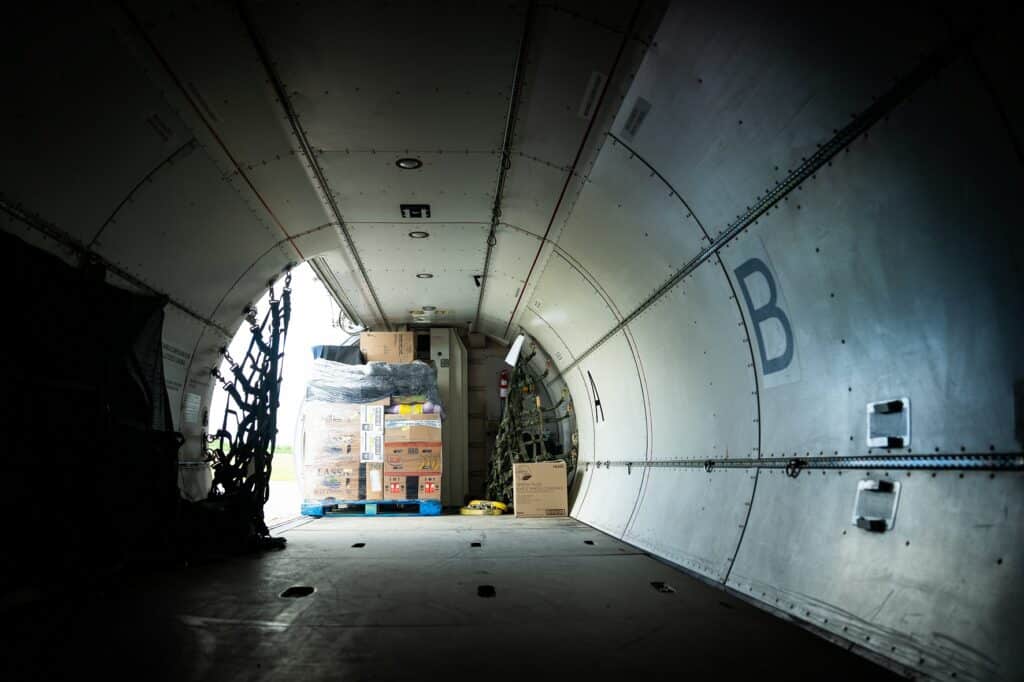
What is a Regional Freighter Aircraft ?
Regional freighter aircraft are freighter aircraft operating on regional markets. The mission length for these aircraft is typically less than 500NM.
Most cargo flights are part of the regional market as their typical length is shorter than 500NM*:
- In Europe and North America, 2 out of 3 cargo flights are less than 500 NM
- In Asia, 1 out of 2 cargo flights are less than 500NM
(*source : Cirium – 2024 data)
Thanks to fast, economical and efficient operations, regional freighter aircraft are ideal to provide essential services to remote communities or to interline with larger freighter aircraft.
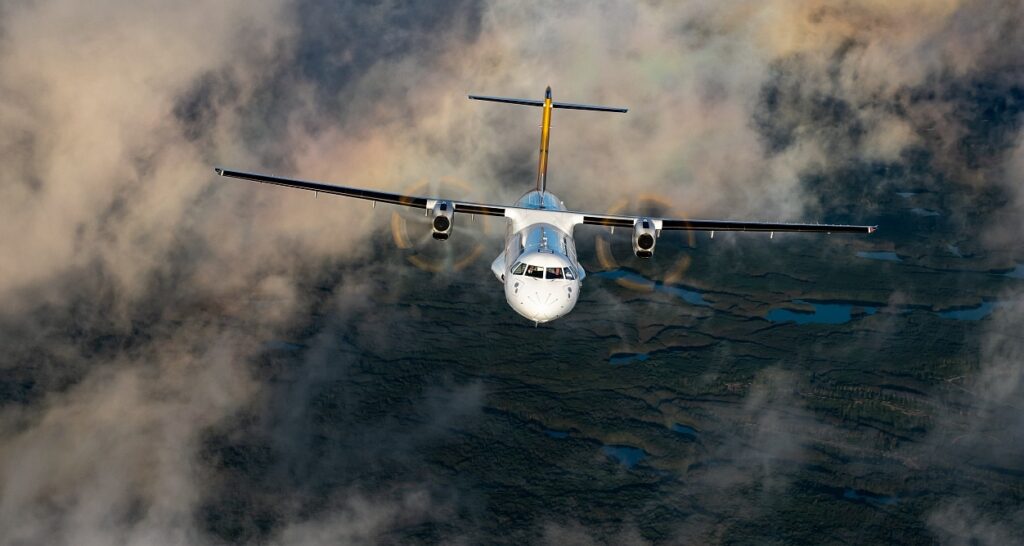
Benefits of Turboprop Freighters for Regional Transportation:
Turboprop freighters enhance the quality of life for remote communities, being able to deliver essential goods and services quickly and seamlessly. Importantly, regional freighters facilitate access to services and amenities in locations that are otherwise difficult to reach when other transport routes are impeded.
Turboprops also enable vital resilience to international supply chains. They ensure connectivity to parts of the world where operators must fly over perilous zones. In Africa, for instance, turboprop freighters transport time-sensitive goods where road travel is deemed unsafe.
The rapid growth of e-commerce has been a defining factor in the increased demand for regional air cargo. Over the past five years, the turboprop freighter fleet has expanded steadily, driven primarily by growth in Europe, North America, and Canada. As online shopping and same-day delivery expectations rise, turboprop freighters have become indispensable assets in connecting regional logistics networks with global distribution hubs. Beyond parcel delivery, turboprop freighters also support “Just-in-Time” production models, linking suppliers and manufacturers across continents. Their ability to connect smaller cities with major logistics centers makes them key enablers of supply chain resilience in an increasingly digital and fast-paced world.
Regional freighters are also key contributors to humanitarian aid missions, for example the UN Food Program.
Because a great share of cargo flights are short, turboprop aircraft, the typical mission length of which is less than 500NM, are particularly relevant as freighter aircraft.
Fun fact: 92% of the current regional freighter fleet are turboprops.

Key Features of Freighter Aircraft
Freighter aircraft are designed with several key features to maximise cargo capacity and operational efficiency. Some of the essential characteristics include:
- Large Cargo Doors: Freighter aircraft could be equipped with oversized cargo doors to facilitate the loading and unloading of goods.
- Optimised Cargo Holds: These aircraft feature wide and spacious cargo holds, which are designed to accommodate various types of goods, from bulk items to unit load devices (ULDs).
- Reinforced Structures: Freighters are built with reinforced floor structures to handle the stress of heavy cargo and ensure safe transport.
- Versatile platform: freighter aircraft can accommodate different types of cargo, from industry standard unit load devices (ULD) to pallets and LD-3S containers offering operators the flexibility to adapt to a wide range of missions.

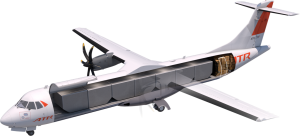
- Sensors and detectors: Freighter aircraft are equipped with highly sensitive, multi-zone smoke sensors and detection systems that continuously monitor the cargo hold, rapidly identifying even the earliest signs of smoke and triggering automatic safety responses to protect the aircraft and its contents.
Advantages of Using Freighter Aircraft
There are several advantages to using freighter aircraft for transporting goods:
- Rapid Delivery: Air cargo is the fastest mode of transport, making freighters ideal for time-sensitive goods such as perishable products, medical supplies, or high-value items.
- Access to Remote or Isolated Regions: Freighter aircraft can reach destinations that are difficult to access by road or sea, providing critical connectivity for remote communities and industries.
- Increased Cargo Capacity: Freighters are built to carry larger volumes of cargo than passengeraircraft, making them ideal for high-demand transport.
- Dedicated Cargo Operations: Since freighters are designed exclusively for cargo, the loading, unloading, and handling processes are more streamlined, improving operational efficiency.
- Flexibility: Freighter aircraft can be customised to carry a wide variety of goods, from perishable items to large machinery, ensuring versatility in global trade.
- Cost-Effectiveness: Due to their high capacity and efficiency, freighter aircraft are often more economical for businesses needing to move goods in bulk over long distances.
ATR Freighter Aircraft Model
ATR offers a range of freighter aircraft models designed to meet the growing demand for regional air cargo transport.
ATR freighter aircraft are either :
- Passenger aircraft converted to freighter aircraft (which is called a P2F conversion)
or - brand-new aircraft delivered as freighter (ATR 72-600F)

Besides, ATR has also developed a “quick change” option allowing operators to change their aircraft configuration from passenger to cargo and vice-versa overnight and, in addition, is now developing a “combi flex” option that will allow to take more cargo together with passengers.
ATR aircraft are known for their operational efficiency, low environmental impact, high flexibility and versatility. The ATR freighters provide businesses with a reliable and cost-effective solution for regional cargo flights, especially in areas with limited infrastructure or challenging airports.
What are Turboprop Aircraft Used For?
Turboprop aircraft are widely utilised across multiple sectors, including:
- Commercial Aviation: regional airlines rely on turboprops for short-haul routes, offering cost-efficient operations.
- Cargo Transport: their ability to access challenging airports makes turboprops ideal for freight, logistics or humanitarian missions.
- Private and Business Aviation: many businesses and VIP transport aircraft use turboprop technology for efficiency and range.
- Regional Air Travel: many airports worldwide rely on turboprops due to their ability to operate on shorter and unpaved runways.
ATR 72-600F: The Only Purpose-Built Regional Freighter
The ATR 72-600F is the only purpose-built regional freighter on the market, introduced by ATR in 2020. This model combines the latest technology from the ATR-600 series with a design optimised for cargo operations. It features a large cargo door, spacious interior of 75m3 and can carry up to 9.2 tons of payload. Its cargo loading systems allow to accommodate both bulk cargo and Containers / standard unit load devices (ULDs). With its regional range and ability to handle various types of cargo, the ATR 72-600F has set a new standard in the regional freighter market.
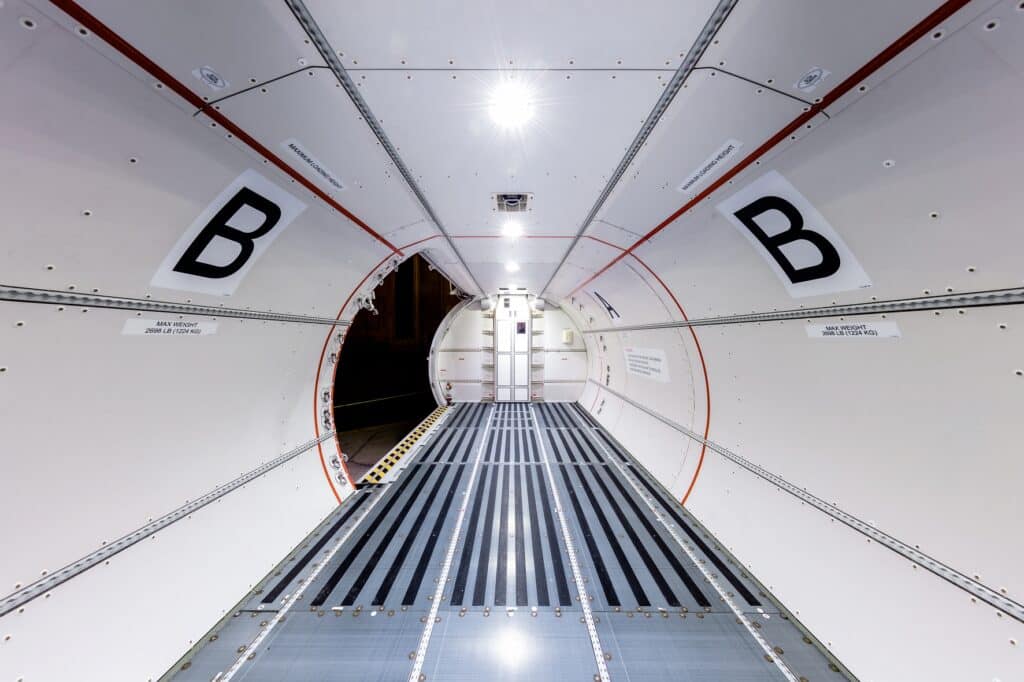
Environmental Impact of Freighter Aircraft
As the demand for air cargo continues to rise, it is essential to consider the environmental impact of freighter aircraft. There is a clear advantage for the turboprop freighter aircraft over the turbojet freighters in terms of fuel consumption and CO2 emissions.
Many modern turboprop freighter models, including ATR’s, incorporate fuel-efficient engines and advanced aerodynamics to reduce emissions and improve fuel consumption. Fuel benefits and associated CO2 reduction can reach up to 45% compared to similar size regional turbojet freighter aircraft.
Additionally, manufacturers are exploring more sustainable alternatives, such as hybrid or electric propulsion systems, to further decrease the carbon footprint of cargo operations. The growing trend toward more low-emission technologies is helping to align the logistics industry with global sustainability goals.
Future of Freighter Aircraft
The future of freighter aircraft is marked by continuous innovation aimed at improving efficiency, reducing environmental impact, and expanding the capabilities of air cargo transport. There’s strong turboprop freighter growth expected in the next two decades. In the coming years, we can expect to see:
- Advanced Engine Technology: The development of more fuel-efficient engines will help reduce emissions and lower operating costs. The ATR 72-600F are powered by Pratt & Whitney Canada’s advanced PW127XT engines. Representing the latest evolution in turboprop propulsion, the PW127XT delivers a 40% extension in time on wing, a 20% reduction in maintenance costs, and a 3% improvement in fuel efficiency compared to previous-generation engines.
- Automation and Digitalisation: Increased automation in cargo handling, including robotic systems and digital tracking, will streamline operations and improve efficiency.
- Sustainability: As the logistics industry moves toward more responsible solutions, freighter aircraft will continue to adopt low-emission technologies.
- Global Expansion: With the rise of e-commerce and the demand for faster delivery times, the use of freighter aircraft will expand, supporting a more connected global economy.











